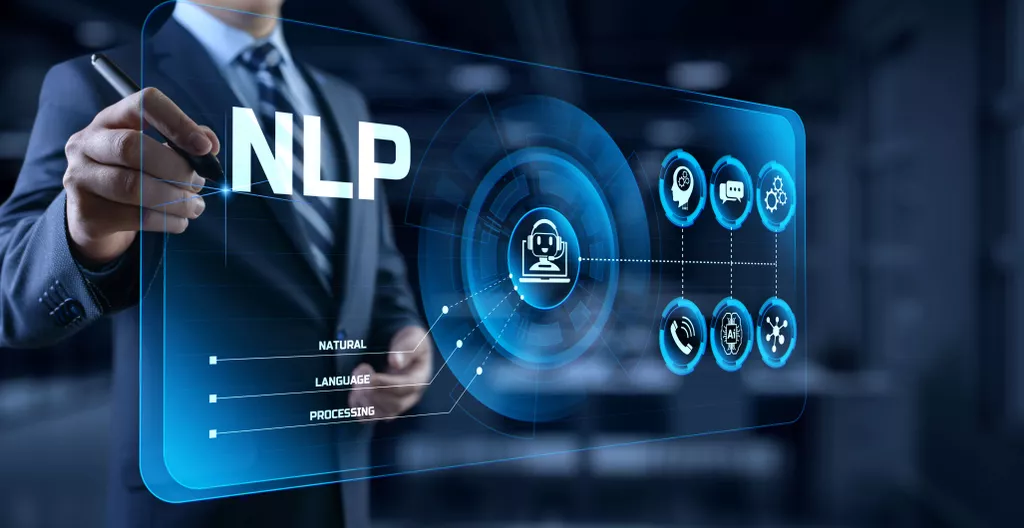AI-led Image Recognition System

Each pixel contains information about red, green, and blue color values (from 0 to 255 for each of them). For black and white images, the pixel will have information about darkness and whiteness values (from 0 to 255 for both of them). This is why many e-commerce sites and applications are offering customers the ability to search using images. So, all industries have a vast volume of digital data to fall back on to deliver better and more innovative services.
- These filters scan through image pixels and gather information in the batch of pictures/photos.
- While you build a deep learning model from scratch, it may be best to start with a pre-trained model for your application.
- AR image recognition is a promising and evolving technology that can have many applications and implications for security and authentication.
- The process of classification and localization of an object is called object detection.
- It is necessary to determine the model’s usability, performance, and accuracy.
- You’ll also find out what neural networks are and how they learn to recognize what is depicted in images.
And even though the difference is nearly unnoticeable to the human brain, computer algorithms struggle to properly classify adversarial images (see Figure 9). A fully convolutional neural network is the perfect fit for image segmentation tasks when the neural network divides the processed image into multiple pixel groupings which are then labeled and classified. Some of the most popular FCNs used for semantic segmentation are DeepLab, RefineNet, and Dilated Convolutions. Cloud Vision is part of the Google Cloud platform and offers a set of image processing features.
Local plastic surgery-based face recognition using convolutional neural networks
In the 1960s, the field of artificial intelligence became a fully-fledged academic discipline. For some, both researchers and believers outside the academic field, AI was surrounded by unbridled optimism about what the future would bring. Some researchers were convinced that in less than 25 years, a computer would be built that would surpass humans in intelligence. Figure 2 shows an image recognition system example and illustration of the algorithmic framework we use to apply this technology for the purpose of Generative Design. Moreover, smartphones have a standard facial recognition tool that helps unlock phones or applications.

Machine learning is a subset of AI that strives to complete certain tasks by predictions based on inputs and algorithms. For example, a computer system trained with an algorithm of images of cats would eventually learn to identify pictures of cats by itself. Computer vision is a set of techniques that enable computers to identify important information from images, videos, or other visual inputs and take automated actions based on it.
What Does Image Recognition Mean?
For everyday tasks, humans still have significantly better visual capabilities than computers. With an exhaustive industry experience, we also have a stringent data security and privacy policies in place. For this reason, we first understand your needs and then come up with the right strategies to successfully complete your project. Therefore, if you are looking out for quality photo editing services, then you are at the right place. Intelligent automation is sometimes used synonymously with cognitive automation.
- Due to their unique work principle, convolutional neural networks (CNN) yield the best results with deep learning image recognition.
- Without the help of image recognition technology, a computer vision model cannot detect, identify and perform image classification.
- Machines can be trained to detect blemishes in paintwork or foodstuffs that have rotten spots which prevent them from meeting the expected quality standard.
- Depending on the complexity of the object, techniques like bounding box annotation, semantic segmentation, and key point annotation are used for detection.
- AI-based image recognition can be used to detect fraud in various fields such as finance, insurance, retail, and government.
- Image recognition identifies which object or scene is in an image; object detection finds instances and locations of those objects in images.
How do we understand whether a person passing by on the street is an acquaintance or a stranger (complications like short-sightedness aren’t included)? AR image recognition also faces some challenges that need to be addressed. For example, AR image recognition can raise privacy and ethical issues, such as how the data is collected, stored, and used, and who has access to it. AR image recognition can also encounter technical and operational difficulties, such as compatibility, scalability, and reliability of the hardware and software.
How Do Neural Networks Work With Images?
You would be surprised to know that image recognition is also being used by government agencies. Today police and other secret agencies are generally using image recognition technology to recognize people in videos or images. Image recognition plays a critical role in medical imaging analysis and diagnosis. It aids in the interpretation of X-rays, MRIs, CT scans, and other medical images, assisting radiologists in identifying anomalies and potential diseases. For example, AI image recognition can help detect early signs of cancer, identify abnormalities in mammograms, or assist in diagnosing retinal diseases from eye scans. Image recognition technology enhances the shopping experience by enabling visual search, product recommendation, and virtual try-on.
After 2010, developments in image recognition and object detection really took off. By then, the limit of computer storage was no longer holding back the development of machine learning algorithms. This usually requires a connection with the camera platform that is used to create the (real time) video images. This can be done via the live camera input feature that can connect to various video platforms via API. The outgoing signal consists of messages or coordinates generated on the basis of the image recognition model that can then be used to control other software systems, robotics or even traffic lights.
Detect visual anomalies
This object detection algorithm uses a confidence score and annotates multiple objects via bounding boxes within each grid box. YOLO, as the name suggests, processes a frame only once using a fixed grid size and then determines whether a grid box contains an image or not. Instance segmentation is the detection metadialog.com task that attempts to locate objects in an image to the nearest pixel. Instead of aligning boxes around the objects, an algorithm identifies all pixels that belong to each class. Image segmentation is widely used in medical imaging to detect and label image pixels where precision is very important.
Next, there is Microsoft Cognitive Services offering visual image recognition APIs, which include face and celebrity detection, emotion, etc. and then charge a specific amount for every 1,000 transactions. Massive amounts of data is required to prepare computers for quickly and accurately identifying what exactly is present in the pictures. Some of the massive databases, which can be used by anyone, include Pascal VOC and ImageNet.
The AI Revolution: From Image Recognition To Engineering
Stable Diffusion AI is based on a type of artificial neural network called a convolutional neural network (CNN). This type of neural network is able to recognize patterns in images by using a series of mathematical operations. Stable Diffusion AI is able to identify images with greater accuracy than traditional CNNs by using a new type of mathematical operation called “stable diffusion”. This operation is able to recognize subtle differences between images that would be difficult for a traditional CNN to detect. To perform object recognition, machine learning experts train AI models on extremely large datasets of labeled data. Each member of the dataset includes the source image or video, together with a list of the objects it contains and their positions (in terms of their pixel coordinates).
- AlexNet [38] is the first deep architecture introduced by Geoffrey Hinton and his colleagues.
- A fully connected layer is the basic layer found in traditional artificial neural networks (i.e., multi-layer perceptron models).
- For example, computers quickly identify “horses” in the photos because they have learned what “horses” look like by analyzing several images tagged with the word “horse”.
- Changing the orientation of the pictures, changing their colors to greyscale, or even blurring them.
- As AI technology continues to evolve, it is likely that stable diffusion AI will become an even more important tool for image recognition.
- In his thesis he described the processes that had to be gone through to convert a 2D structure to a 3D one and how a 3D representation could subsequently be converted to a 2D one.
Nowadays Computer Vision and Artificial Intelligence have become very important industries. It is known to use very efficient tools and to be able to give an answer to a lot of different issues. Many companies’ CEOs truly believe it represents the future of their activities, and have already started applying it to their system.
Understanding the Java 20 Release
It can help computers to recognize objects and patterns in images with greater accuracy and reliability, while also reducing the amount of time and effort required. As AI technology continues to evolve, it is likely that stable diffusion AI will become an even more important tool for image recognition. The main benefit of using stable diffusion AI for image recognition is its accuracy. This type of AI is able to identify objects in an image with greater accuracy than other AI algorithms. This is because it is able to identify subtle differences in the image that other algorithms may miss.
A user-friendly cropping function was therefore built in to select certain zones. Lawrence Roberts is referred to as the real founder of image recognition or computer vision applications as we know them today. In his 1963 doctoral thesis entitled “Machine perception of three-dimensional solids”Lawrence describes the process of deriving 3D information about objects from 2D photographs. The initial intention of the program he developed was to convert 2D photographs into line drawings. These line drawings would then be used to build 3D representations, leaving out the non-visible lines. In his thesis he described the processes that had to be gone through to convert a 2D structure to a 3D one and how a 3D representation could subsequently be converted to a 2D one.
The AI Revolution: From AI image recognition technology to vast engineering applications
The emergence of artificial intelligence and computer vision opens new development potential for many businesses. Companies in different sectors such as medical, automotive, gaming and e-commerce are adopting the sub category of AI, image recognition technology, for speed, convenience and flexibility. According to Emergen Research, global image recognition market size is expected to reach US$ 80.29 Billion in 2028 and register a CAGR of 15.3% during the forecast period. Medical imaging is a popular field where both image recognition and classification have significant applications.
How is AI used in image recognition?
Machine learning, deep learning and neural network are all applications of AI. Image recognition algorithms compare three-dimensional models and appearances from various perspectives using edge detection. They're frequently trained using guided machine learning on millions of labeled images.
Although earlier deep convolutional neural network models like VGG-19, ResNet, and Inception Net can extricate deep semantic features, they are lagging behind in terms of performance. In this chapter, we propounded a DenseNet-161–based object classification technique that works well in classifying and recognizing dense and highly cluttered images. The experimentations are done on two datasets namely, wild animal camera trap and handheld knife. Experimental results demonstrate that our model can classify the images with severe occlusion with high accuracy of 95.02% and 95.20% on wild animal camera trap and handheld knife datasets, respectively. AlexNet [38] is the first deep architecture introduced by Geoffrey Hinton and his colleagues.
NTT to develop industry-specific generative AI for corporate use – Nikkei Asia
NTT to develop industry-specific generative AI for corporate use.
Posted: Fri, 09 Jun 2023 04:54:00 GMT [source]
It can detect subtle differences in images that may be too small for humans to detect. This makes it an ideal tool for recognizing objects in images with a high degree of accuracy. Additionally, it can process large amounts of data quickly, allowing it to identify patterns and objects in images much faster than humans can. The use of stable diffusion AI for image recognition is gaining traction in the tech industry due to its numerous advantages. Stable diffusion AI is a type of artificial intelligence that uses mathematical models to identify patterns in data. This type of AI is particularly useful for image recognition, as it can detect subtle differences in images that may be difficult for humans to detect.

The first steps toward what would later become image recognition technology happened in the late 1950s. An influential 1959 paper is often cited as the starting point to the basics of image recognition, though it had no direct relation to the algorithmic aspect of the development. Crops can be monitored for their general condition and by, for example, mapping which insects are found on crops and in what concentration. More and more use is also being made of drone or even satellite images that chart large areas of crops. Image recognition applications lend themselves perfectly to the detection of deviations or anomalies on a large scale.
Artificial intelligence terms professionals need to know – Thomson Reuters
Artificial intelligence terms professionals need to know.
Posted: Tue, 23 May 2023 07:00:00 GMT [source]
In the near future, combined electronic chromoendoscopy with AI, the optical diagnosis will achieve optimal diagnostic accuracy that is comparable with a standard histopathologic examination. This will reduce medical costs by avoiding unnecessary resection and pathologic evaluation. Their light-sensitive matrix has a flat, usually rectangular shape, and the lens system itself is not nearly as free in movement as the human eye.
How is AI used in facial recognition?
Face detection, also called facial detection, is an artificial intelligence (AI)-based computer technology used to find and identify human faces in digital images and video. Face detection technology is often used for surveillance and tracking of people in real time.
Why is AI image recognition important?
The image recognition algorithms help find out similar images, the origin of the image in question, information about the owner of the image, websites using the same image, image plagiarism, and all other relevant information. In the past reverse image search was only used to find similar images on the web.


 We use cookies to optimize our website and our service.
We use cookies to optimize our website and our service. 
